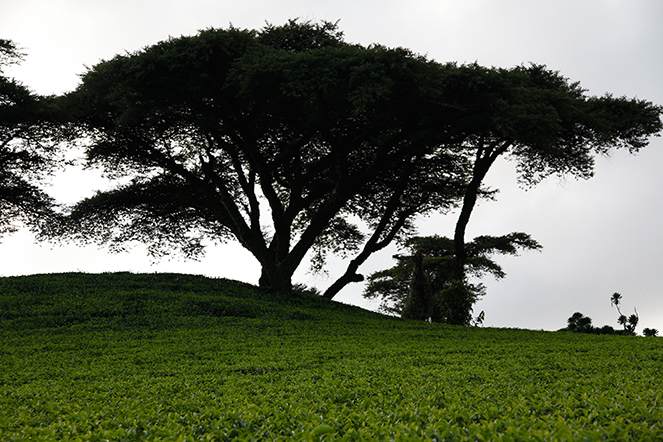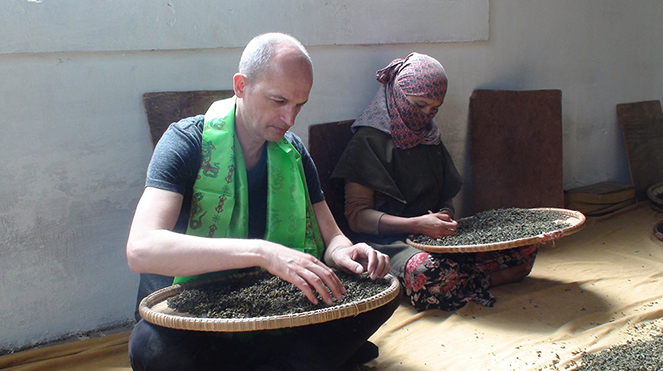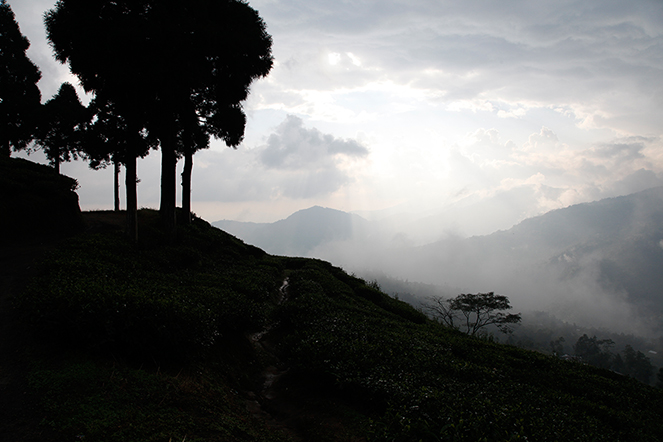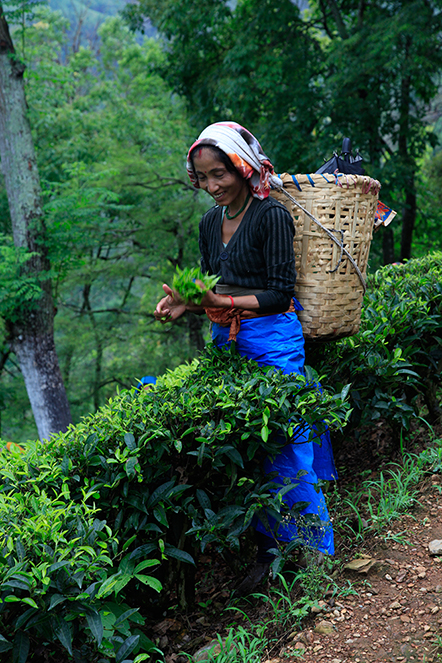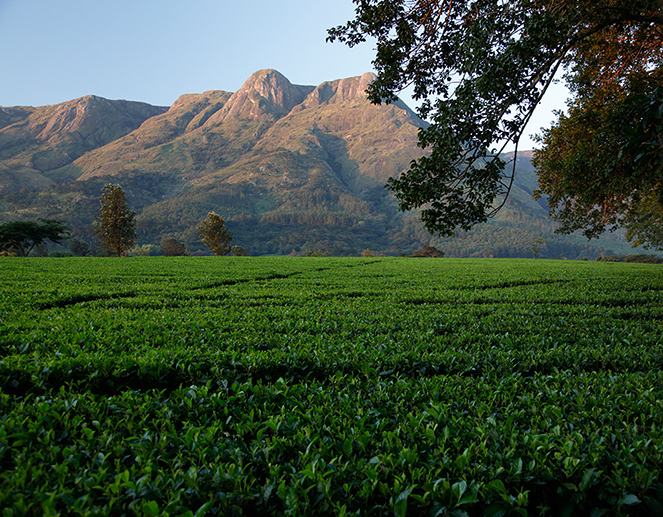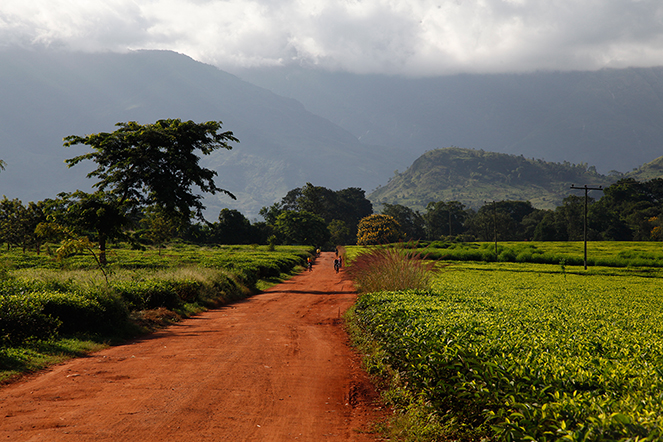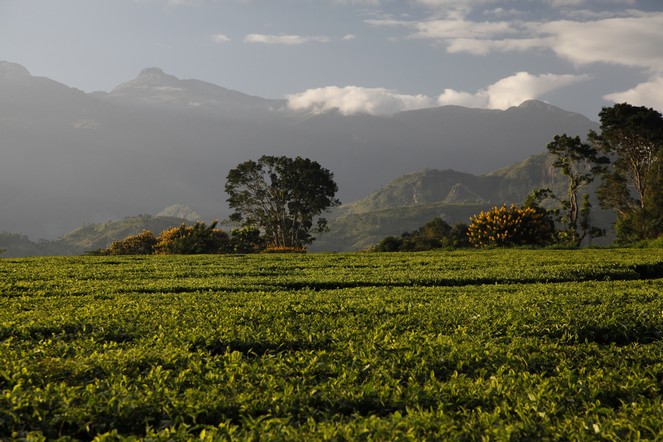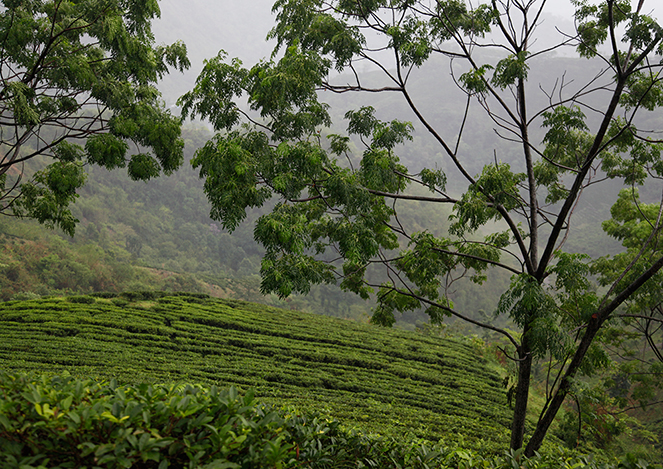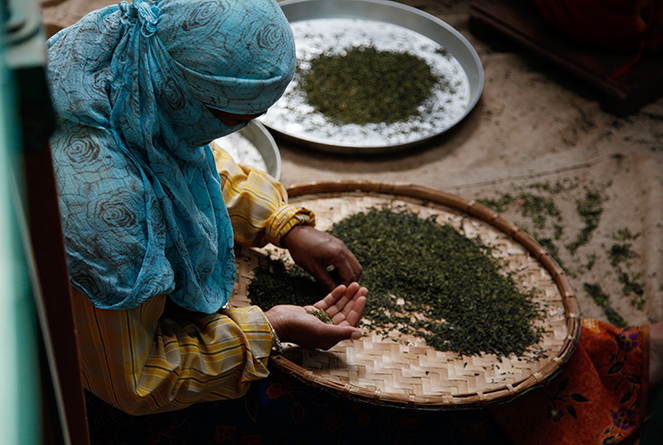In some countries, tea plants require cover. It depends on the climate. Strong sunshine dries out the ground, whereas tea plants love humidity. In addition, tea plants don’t like wind. The trees used differ from country to country but they tend to belong to the Leguminosae family. Pictured here is a fine Acacia abyssinica specimen.
From plant to cup
Meticulous work
Under the Himalayan clouds
During a heatwave you must remember to stay hydrated. You need to drink frequently. You can also cool your face, with a wet cloth or a facial mist. As for me, I like the original version of mist – it’s called the Himalayas. It is cool there, especially at this time of year, when clouds full of monsoon rain gather above your head.
Superb 2015 new-season teas
Calling all fans of “grand cru” teas! You now have access to the best selection of teas in the world. This is the optimum time of year to try the finest teas in existence. All are extremely fresh, newly delivered by air. There are first-flush and second-flush Darjeelings, new-season Chinese teas, and Japanese Ichibanchas harvested in May, alongside teas from Nepal, Taiwan and South Korea.
For tea-lovers, the start of the summer is a pure pleasure!
At the foot of Mount Mulanje
In Malawi, tea grows in the south. We are here at the southern end of the Great Rift Valley, at the foot of Mount Mulanje. They say the views are incredible from the top; I can well imagine it, and intend to make the journey one day. In the meantime, I think the view from the bottom isn’t bad either, both vegetal and mineral. This expanse of green relaxes the eyes. It’s quite an idyllic place to work.
From one earth to another
If I talked to you about “terre battue” in French – literally “beaten earth”, the name given to the clay surface of tennis courts – you’d think I was talking about the French Open, taking place at the moment just outside Paris. Not at all. This brick-coloured ground actually makes me think of the tea fields, those of Malawi for example. The path is like a scar cutting through the fresh green expanse of the tea plants. It’s a million miles from the courts of Roland-Garros. And without the crowds. There, silence reigns.
Malawi: a wonderful discovery
An assessment of the 2015 first-flush Darjeelings
When you harvest the terminal bud of the tea plant several times, the stem becomes stressed and stops producing a new bud. This phenomenon of dormancy, known as “banjhi” in Darjeeling, marks the end of the spring harvest (first flush).
If I had to give my assessment of this season in Darjeeling, I’d say we received batches of very varying quality, and few of exceptional quality. But I’ll conclude on a good note, with the choice of a Puttabong Clonal Queen DJ48 and a Margaret’s Hope Tippy Clonal DJ30. The first represents what Puttabong does best; the second is quite simply breathtaking.
Darjeeling spring harvests
It’s not only the tea plantations that are busy at the moment. Yesterday I received no less than 120 different tea samples to taste. As ever, you need to be quick. If I want to make an offer on one of these batches I must have tasted them all in one or two days at the most. After that, it will be too late.
Of course, I don’t drink all the teas, I spit them out after turning the liquor around in my mouth while I analyse it.

